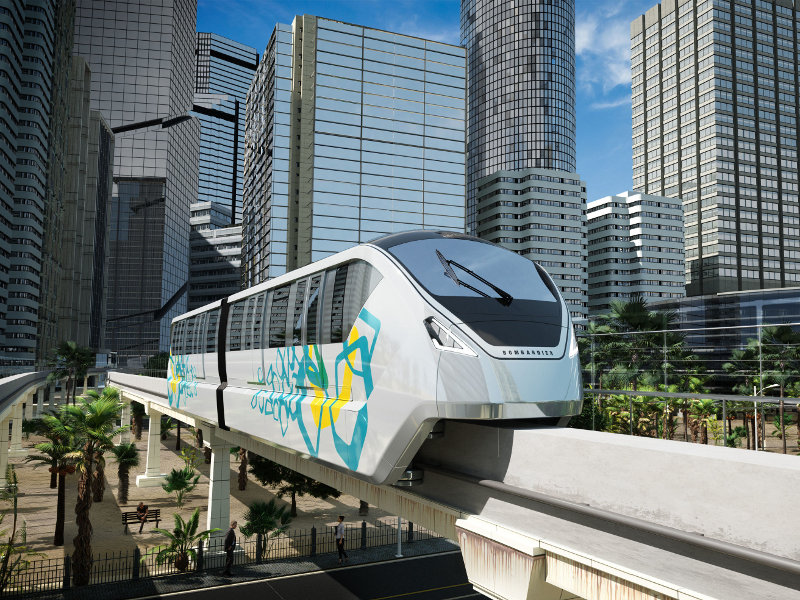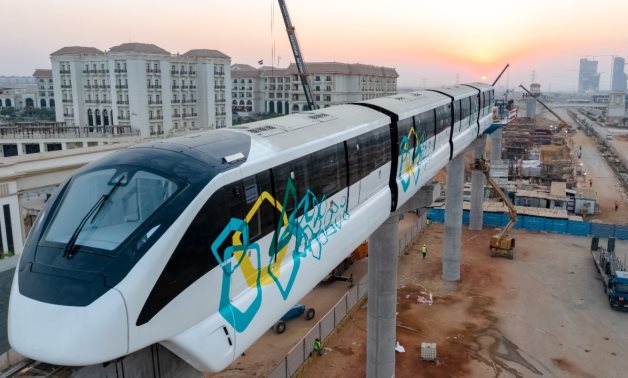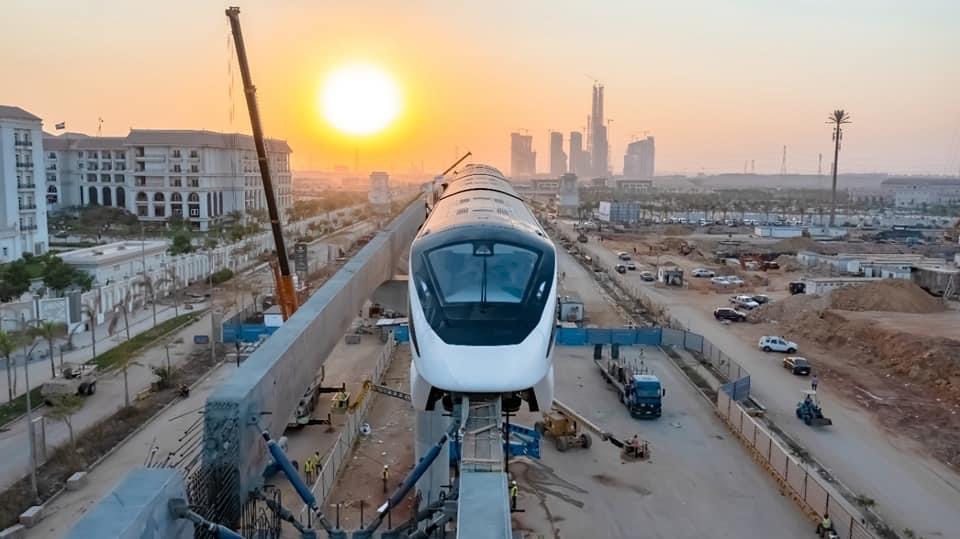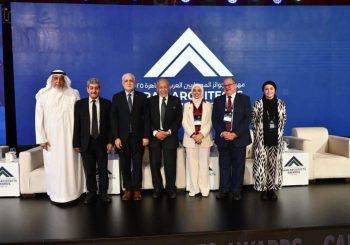Photo via Egypt Independent
In the last few years, the Egyptian government embarked on several projects in the roads and transportation sector, with the main goal of improving mobility for citizens, while reducing traffic congestion. Among them is the ‘Monorail’, with foundation structures that currently tower over many areas in Cairo, from Fifth Settlement to Nasr City and beyond.
As the name suggests, a monorail is a railway that runs on a single rail, requiring minimal space, and moving at a higher speed than metros and trains.
Accordingly, the ‘Monorail’ is one of the most-awaited national projects, anticipated to provide Egyptians with a fast, comfortable, safe, and environmentally friendly means of transport, in addition to being the first public transportation vehicle from the New Administrative Capital and 6th of October City to Greater Cairo.

In August 2019, Bombardier Transportation, Orascom Construction, and the Arab Contractors, together with the National Authority for Tunnels, signed an agreement to design, build, and operate two monorail lines in Egypt.
With a speed of 80 km per hour, the travel time for the 54km New Administrative City line will be 60 minutes, and 42 minutes for the 42km 6th of October City line; both accumulating a much less time frame than it takes through other modes of transport currently available. The monorail will have the capacity to transport nearly 45,000 passengers an hour in each direction at full capacity.
The autonomous monorail will comprise of two lines, the first extending from Nasr City to the New Administrative Capital – 56.5 km long, and the second extending from 6th of October City to Al-Mohandessin – 42 km long. The New Administrative Capital line will consist of 21 stations while the 6th of October City line will feature 12 stations.
Upon completion, the two lines will each be able to transport 45,000 passengers per hour in each direction.

The New Administrative Capital line will begin from the stadium, and connect Hisham Barakat, Nouri Khattab, the 7th District (Al Hay Al Sabea), Free Zone, Marshal Tantawi (Mushir Tantawi), Cairo Festival, El Choueifat, Air Force Hospital, Al-Narjis Neighborhood, Mohamed Naguib, American University in Cairo (AUC), Emaar, Al Nafoura Square, Barwa, Middle Ring Road, Mohamed Bin Zayed, Regional Ring Road, Al Masa Hotel, Ministerial District, and Administrative Capital.
The 6th of October City line will begin at Gameat El Dewal, and continue to Ring Road, El Marioutia, El Mansouria, Cairo-Alexandria Desert Road, Hyper One, Juhaina Square, Authority of Urban Communities, El Hosary, Dar El Fouad, the Industrial Zone, and the High-Speed Railway stops.
The fully-automated, driverless, trains will have rubber tyres to reduce noise, in addition to being corrosion-resistant and recyclable.
The project, which costs up to 2.5 billion Euros, is set to be inaugurated in 2023.







Comments (5)
[…] بدلاً من الوقود. على الرغم من أن كلاهما فوق الأرض ، فإن خط حديدي أحادي يسافر في طريق مختلف ، مما يوفر رابطًا ترانزيتًا […]
[…] eco-friendly in its use of electricity instead of fuel. Despite both being above the ground, the monorail travels in a different route, providing a mass-transit link between Greater Cairo, the New […]